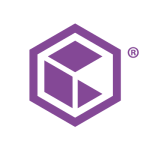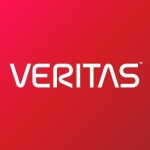What is most valuable?
When it's installed, the most valuable feature is ease of use. It's a little tricky to install straight out of the box and configure, because of the way the licensing module works. Once you get beyond that, it's very easy to use.
How has it helped my organization?
We don't utilize it the way it's supposed to be used. It's kind of like a back stop. For example, if an engineer accidentally deletes something, he raises a ticket and with a request to get his file back. Normally, the backup routines are run, and that's what we use Data Protector for. We just dive into that, pull it back, and say, there are half a dozen backups, and ask which one he wants. He says, "I want the one before I made the changes." We can't just apply a mindset here, or read his mind. They can drill it down to specifics. We can then drill the tool down to specifics. It does that process, and it does it well.
What needs improvement?
I know I am being picky, but the only thing that really tripped us up is the license model. It’s a wonderful product, but if they could change that model, it would be great.
I would like to get everything for 60 days, so I can turn on all the features that I want. I can get it all set up and then broadcast a message to somebody at HPE or their distributors. We could sort out our licensing then, because we will have time to work out what we want to do, and get it honed up first. Because we're all moving to a service base, it would make sense to do it that way.
What do I think about the stability of the solution?
To be honest, I don't think Backup Exec comes anywhere close to this tool in terms of stability. When you match it, and you use Backup Exec and Veeam together, you can get kind of close to this tool. However, you still don't get the granularity of the data. This solution is awesome. It is leaps ahead of Backup Exec, leaps ahead.
What do I think about the scalability of the solution?
We haven’t had to scale it, but the way it's set up, it can be scaled. Although my distributor will correct me, I do think it comes down to the licensing. The current license model isn’t complicated, but then it's not straightforward either.
What you have to do, and my distributor will shoot me down for saying this if I get it wrong, but you license the box or your data. Then you license the device you want to put your stuff on. If you want to scale it, you've then got to jump through the hoops to get the right licenses, and then go from there. That's one of the things that we hit first off. Once we got it up and running, it’s easy to use.
What we wanted was disk-to-disk replication. After we got that nailed down, we then wanted to replicate from disk to tape. We were told that we can't do that. We asked why not, and then we were told it doesn't let you do it unless you buy it with a license. That's what hurt, because then we have to go back through the loop of giving the business justifications. This just added to the frustration.
How are customer service and technical support?
To be honest, I didn't actually talk to anyone. The information that we needed was on the HPE website, so it was good that we didn't need to talk anyone. I dare say we would have had to talk to somebody in a different time zone. My distributor, who shall remain nameless, was actually quite helpful because what he said was, "Right before we start dialing numbers, eight hours back that way, jump on the HPE website, and see if you can find it there." We did find it.
Which solution did I use previously and why did I switch?
We viewed several things. We initially started off with Backup Exec, and then we had a homegrown thing which didn't work. This tool and Backup Exec will only run when you tell them to. We were frustrated with that because the engineers, being engineers, don't care. They just want their data and they want it now.
You can't do that in a backup environment. You have to plan, schedule, tell it what and when to monitor. We went forward with that. The only thing that even came close to doing what we wanted was Data Protector. So that is what we purchased.
We proved the tool as follows. We took quite a few of the senior management and told them we are going to stage a real-life crisis, without the rest of the staff knowing. We just turned the storage off. Everybody screamed and we asked, "Who needs what? What do you need? When do you need it?” We starting using the Data Protector service and we retrieved what they wanted. It took us two hours, but that two hours proved the point that Data Protector was the tool for us.
How was the initial setup?
The setup was a little complex. You follow the steps, which are very logical and straightforward. However, once you get beyond that, you start to define your backup process and that's when you fall over. If you haven't put a lot of thought in that up front, such as defining that you want to perform disk-to-disk backup and then replicate to tape.
In our justification, we didn't make that clear. When we went to talk to our business distributor, we were then given our disk-to-disk setup. Then we wanted to change to disk to app, so we had to repeat the painful process again.
Which other solutions did I evaluate?
We kind of matrixed it out, and said, "These do that, this does that." Every time we asked, "What's this Data Protector? What's that Data Protector?" By the time we'd done that little exercise, it became very clear how to proceed.
What other advice do I have?
I suggest getting Data Protector or lose my friendship. All kidding aside, if a colleague asked me for advice, I would say to seriously consider it.
Other tools come close, but what you have to realize, with everything that's happening, going forward, you'd be daft to consider other options, especially if you're on a HPE platform.
If you were running this tool on a Dell site stack, instead of HPE, it might be a different scenario. The HPE site stack can guarantee that there are no “gotchas” in there. If you're running Dell, then you would see that maybe it's not the product for you. Maybe you want something that is Dell equivalent, but I would still suggest giving Data Protector a darn good look. This solution does exactly what it says on the tin. I know that sounds cheesy, but the solution works as advertised.
When looking for a vendor, I look for know-how, support, and ease of use.
Disclosure: My company does not have a business relationship with this vendor other than being a customer.













This review reflects unfamiliarity with the latest, state of the art backup and recovery products. The only way to buy these sorts of tools is to compare them. The purchase of a data protection tool because it is created by your hardware vendor doesn't usually result in having the best tool for your business. Backup Exec is all but dead and there are FREE tools better for most situations. The state of the art in backup is found in Veeam, Rubrik and Cohesity and some other up-and-coming products. These products install into an enterprise environment in a quick damn hurry and provide protection out of the box. The licensing schemes are uncomplicated and generally there is the ability to safely enable users to restore their own data. If you have older UNIX (not Linux) systems, you may be stuck with a legacy product like Data Protector or IBM Spectrum Protect (ex-TSM, ex-ADSM) but a better choice would be NetBackup or Commvault Simpana. IMO, they are much better products than HPE DP.